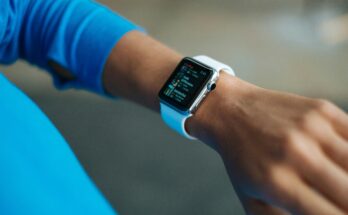The rapid advancements in technology have given rise to innovative solutions aimed at improving the quality of life for individuals with disabilities. One such groundbreaking development is the advent of smart glasses designed for visually impaired individuals. These devices harness cutting-edge technology to assist users in navigating their environments, recognizing faces, reading text, and performing various daily tasks. This article delves into the transformative potential of smart glasses for visually impaired individuals, exploring their features, benefits, and the impact they can have on enhancing daily life.
Understanding Visual Impairment
Types of Visual Impairment
Visual impairment encompasses a range of conditions that affect one’s ability to see. These conditions can vary in severity and include:
- Blindness: Complete lack of vision.
- Low Vision: Significant vision loss that cannot be corrected with standard glasses or contact lenses.
- Macular Degeneration: A condition that causes loss of central vision.
- Glaucoma: A group of eye conditions that damage the optic nerve, leading to vision loss.
- Diabetic Retinopathy: Damage to the retina caused by complications from diabetes.
- Retinitis Pigmentosa: A genetic disorder that causes loss of peripheral vision and night blindness.
Challenges Faced by Visually Impaired Individuals
Visually impaired individuals encounter numerous challenges in their daily lives, such as:
- Mobility and Navigation: Difficulty in moving around safely, especially in unfamiliar environments.
- Access to Information: Challenges in reading printed text and accessing digital information.
- Social Interaction: Difficulty recognizing faces and interpreting visual cues, which can impact social interactions.
- Independence: Reliance on others for assistance with daily tasks, affecting their sense of independence.
The Emergence of Smart Glasses

What Are Smart Glasses?
Smart glasses are wearable devices that incorporate advanced technology to provide users with enhanced visual and informational capabilities. For visually impaired individuals, these glasses are equipped with features designed to assist with navigation, object recognition, reading, and more.
Key Features of Smart Glasses for Visually Impaired Individuals
- Object Recognition: Ability to identify and announce objects in the user’s surroundings.
- Text Reading: Optical Character Recognition (OCR) technology to read printed text aloud.
- Face Recognition: Capability to recognize and announce known faces.
- Navigation Assistance: GPS and real-time navigation features to guide users safely.
- Voice Commands: Hands-free operation through voice-activated commands.
- Augmented Reality (AR): Overlay of digital information onto the real world to enhance the user’s understanding of their environment.
Leading Smart Glasses Technologies
OrCam MyEye
OrCam MyEye is a small, lightweight device that attaches to the user’s glasses. It features a miniature camera and speaker, enabling it to read text, recognize faces, and identify products. OrCam MyEye is designed to be intuitive and user-friendly, offering immediate assistance through simple gestures and voice commands.
eSight
eSight smart glasses are designed to provide users with enhanced vision through high-resolution video processing. These glasses capture live video and display it on screens positioned in front of the user’s eyes. eSight glasses can be customized to suit the user’s specific vision needs, making them a versatile tool for improving daily life.
Aira
Aira smart glasses connect users with trained agents who provide real-time assistance through a live video feed. The agents can help with navigation, reading, and other tasks, offering personalized support to visually impaired individuals. Aira’s service aims to empower users by providing them with on-demand assistance whenever and wherever they need it.
Benefits of Smart Glasses for Visually Impaired Individuals
Enhanced Mobility and Independence
Smart glasses significantly improve the mobility and independence of visually impaired individuals. With features like real-time navigation and object recognition, users can move around more confidently and safely. This newfound independence reduces reliance on others and enhances the user’s quality of life.
Access to Information
Reading printed text and accessing digital information are crucial for education, employment, and daily activities. Smart glasses equipped with OCR technology can read books, menus, labels, and screens aloud, providing visually impaired individuals with greater access to information and improving their ability to learn and work independently.
Improved Social Interaction
Recognizing faces and interpreting visual cues are essential for social interactions. Smart glasses with face recognition capabilities can announce the names of people the user encounters, helping them engage more confidently in social settings. This feature fosters better relationships and reduces the social isolation often experienced by visually impaired individuals.
Personal Safety
Navigation assistance and object recognition features enhance personal safety by helping users avoid obstacles and hazards. Smart glasses can provide real-time alerts about potential dangers in the user’s path, reducing the risk of accidents and injuries.
Case Studies: Transformative Impact of Smart Glasses

Case Study 1: Sarah’s Journey to Independence
Sarah, a young woman with low vision due to macular degeneration, struggled with daily tasks such as reading and navigating public spaces. After receiving a pair of OrCam MyEye glasses, Sarah experienced a significant improvement in her quality of life. She could read books, recognize faces, and move around her city independently. The smart glasses empowered Sarah to pursue her education and hobbies with confidence, enhancing her overall well-being.
Case Study 2: James’ Enhanced Work Environment
James, a software developer with diabetic retinopathy, faced challenges in reading screens and documents at work. eSight smart glasses provided James with the visual clarity he needed to perform his job effectively. The glasses’ high-resolution display allowed him to read text and code without straining his eyes. As a result, James’ productivity and job satisfaction improved, and he felt more integrated into his workplace.
Case Study 3: Maria’s Social Engagement
Maria, an elderly woman with glaucoma, found it difficult to recognize faces and engage in social activities. Aira smart glasses connected Maria with agents who provided real-time assistance during social gatherings. The agents helped her recognize people and navigate crowded spaces, enabling Maria to participate more actively in her community. The glasses reduced Maria’s feelings of isolation and boosted her confidence in social settings.
Challenges and Considerations
High Cost
One of the primary challenges of smart glasses is their high cost. Advanced technology and specialized features make these devices expensive, limiting accessibility for many visually impaired individuals. Efforts to reduce manufacturing costs, provide subsidies, and develop affordable alternatives are essential to make smart glasses more widely available.
Training and Adaptation
Using smart glasses requires training and adaptation, particularly for individuals who are not tech-savvy. Comprehensive training programs and user-friendly interfaces are crucial to ensure that users can maximize the benefits of these devices. Support from healthcare professionals and technology experts can facilitate the learning process.
Privacy Concerns
Smart glasses equipped with cameras and real-time data processing capabilities raise privacy concerns. Ensuring that data collected by these devices is secure and used ethically is paramount. Clear guidelines and robust data protection measures must be in place to address these concerns and build user trust.
Technological Limitations
Despite their advanced features, smart glasses are not a one-size-fits-all solution. Different types of visual impairment require different approaches, and no single device can cater to all needs. Ongoing research and development are necessary to create more versatile and adaptable solutions.
The Future of Smart Glasses for Visually Impaired Individuals

Technological Advancements
The future of smart glasses for visually impaired individuals looks promising, with ongoing advancements in AI, AR, and sensor technology. Future iterations of smart glasses will likely offer improved accuracy, faster processing, and enhanced user experiences. Innovations such as eye-tracking technology and machine learning algorithms will further refine the capabilities of these devices.
Increased Accessibility
Efforts to make smart glasses more affordable and accessible will play a crucial role in their widespread adoption. Partnerships between tech companies, healthcare providers, and governments can facilitate the distribution of these devices to those in need. Subsidies, grants, and insurance coverage for smart glasses will help ensure that cost is not a barrier to access.
Integration with Other Assistive Technologies
Smart glasses can be integrated with other assistive technologies to provide comprehensive support for visually impaired individuals. For example, combining smart glasses with smart canes, tactile devices, and voice assistants can create a holistic assistive ecosystem. Such integration will enhance the overall effectiveness of assistive technologies and improve the user’s quality of life.
Conclusion
Smart glasses represent a significant leap forward in assistive technology for visually impaired individuals. By leveraging advanced features such as object recognition, text reading, face recognition, and navigation assistance, these devices have the potential to transform daily life for users. The benefits of smart glasses extend beyond improved mobility and independence; they enhance access to information, social interaction, and personal safety.
While challenges such as high costs, training requirements, privacy concerns, and technological limitations exist, the future of smart glasses is bright. Continued advancements in technology, increased accessibility, and integration with other assistive tools will further enhance their impact. As we move towards a more inclusive and technologically advanced society, smart glasses will play a pivotal role in empowering visually impaired individuals and improving their quality of life



